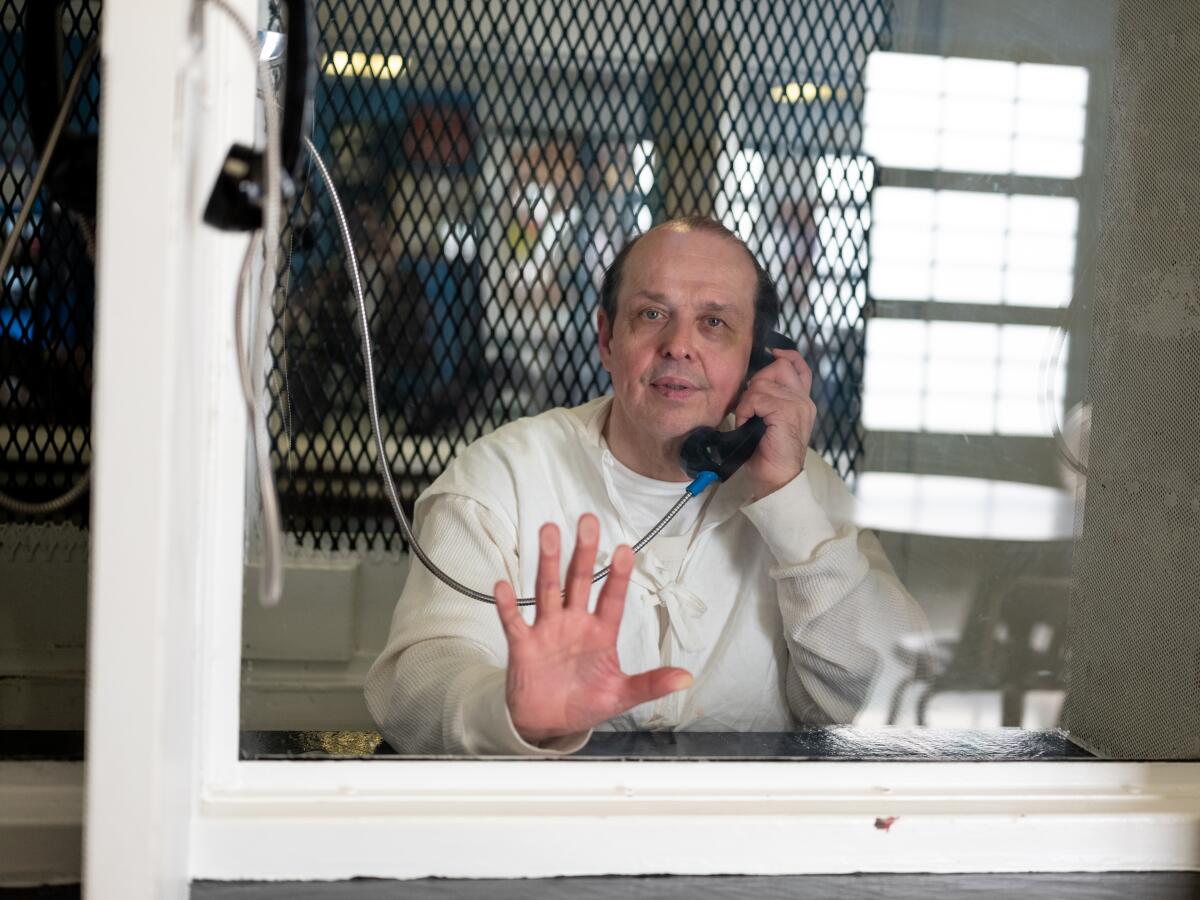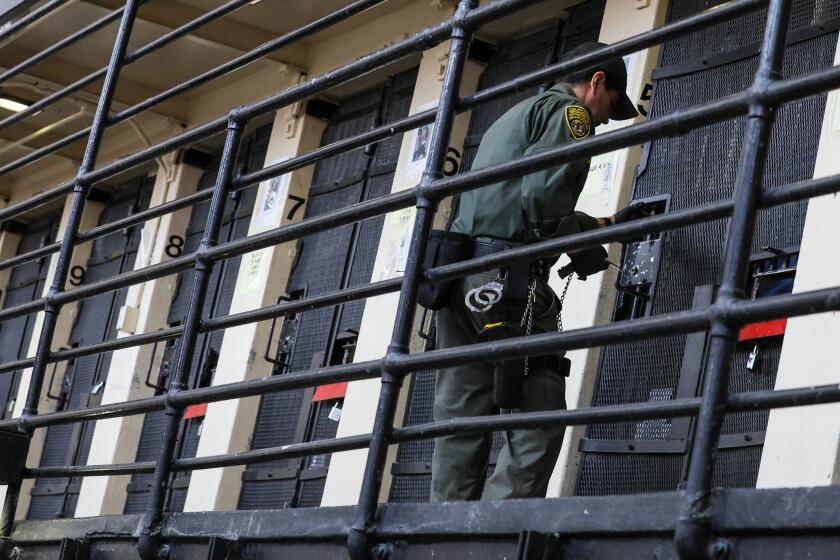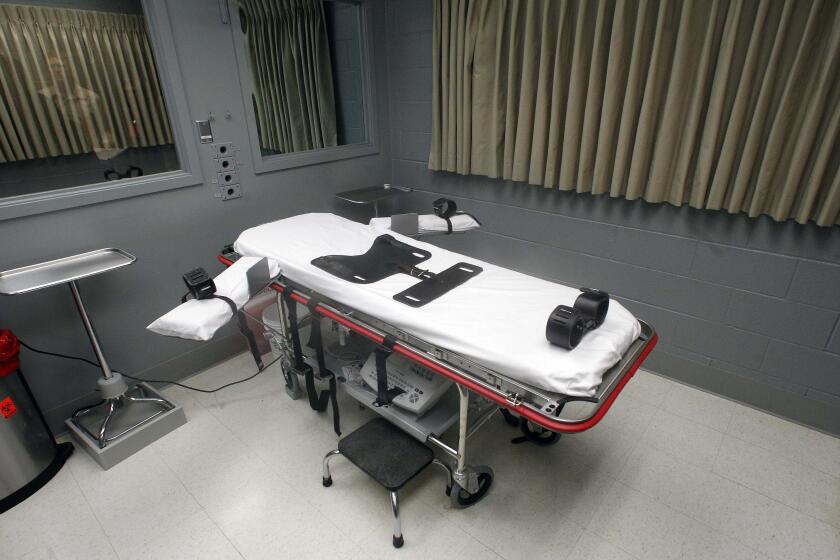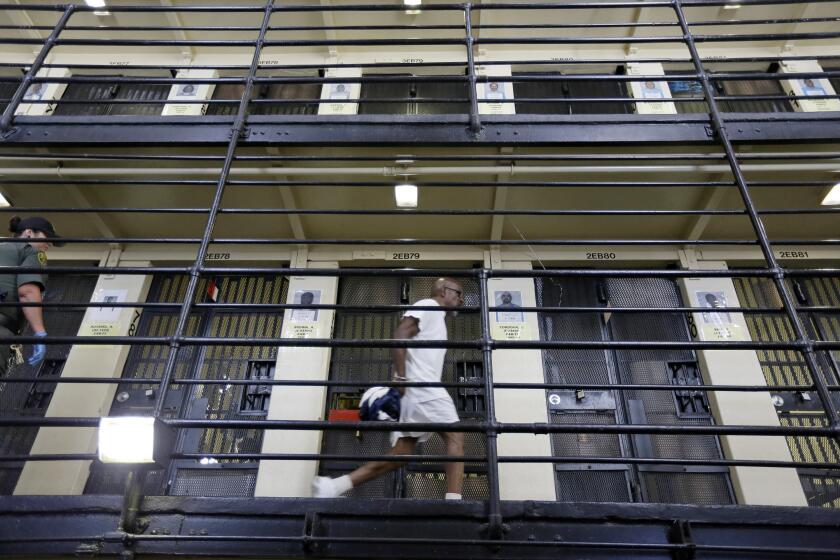Editorial: Executions of the conceivably innocent are no better than human sacrifice

- Share via
The state of South Carolina on Friday strapped down Freddie Owens and injected him with a chemical that’s usually used to euthanize pets. In the days before the execution, a key witness against him admitted testifying falsely at trial to save himself, and said Owens had nothing to do with the 1999 murder for which he was convicted. But that didn’t matter. Owens, also known as Khalil Divine Black Sun Allah, was put to death.
Officials in Missouri are preparing to execute Marcellus Williams on Tuesday. The two witnesses against him are known liars, and the bloody footprint and hair samples found at the scene were determined not to belong to him or the victim in the 2001 fatal stabbing for which he was convicted. DNA samples on the murder weapon haven’t been analyzed because prosecutors handled the knife without gloves and tainted the evidence. A Missouri governor stayed an earlier execution and ordered a board to investigate the case. But a new governor dissolved the board and revoked the stay.
Racism taints every stage of death penalty proceedings in California, as the state Supreme Court should acknowledge. It’s present in other criminal sentences as well.
Earlier this month the prosecutor offered to switch the sentence to life in prison if Williams would plead guilty, and the condemned man agreed despite insisting he had nothing to do with the crime. A judge accepted the deal, but it was thrown out on appeal. So despite the lack of physical evidence linking Williams to the murder, and over the objection of the prosecutor and the victim’s family, the execution is back on.
In Texas they’re getting ready to kill Robert Roberson next month. Roberson was convicted of killing his 2-year-old child in 2002 based on the controversial “shaken baby syndrome” hypothesis, which has been widely branded as junk science. In the days before the child’s death, she was running a fever, and an emergency room doctor prescribed an antihistamine that can cause fatal respiratory distress in young children.
There’s no better example of the death penalty’s randomness than the case of Richard Glossip in Oklahoma, who even the district attorney says was denied a fair trial. But he’s still slated for a May 18 execution.
When Roberson brought her back to the ER, law enforcement officials didn’t like the way he was acting — unemotional and detached — and concluded it was evidence of guilt. It was likely evidence of his autism.
The detective who testified against him now realizes that and is urging clemency so that Roberson is not put to death for a crime that he did not commit and that did not even occur, because evidence suggests the child died from pneumonia and septic shock.
But Roberson is scheduled to be put to death for shaking her to death anyway.
Florida jurors and Oregon’s governor were unlikely heroes in the fight against executions last year. But elsewhere the death mill continues to grind.
Death sentences and executions, even for actual murderers, are relics of primitive societies in which leaders and their underlings ritually killed to expiate perceived evil, propitiate the gods and calm fears of social chaos.
So what do death sentences become when the witnesses, police, prosecutors and judges admit that their former testimony or conclusions were wrong and the accused is innocent, and the executions proceed anyway?
They cross the line that separates civilization from savagery, criminal justice from black magic, accountability from ritualistic human sacrifice. They become false religion, dependent on totems such as “shaken baby syndrome,” and shamanistic revelation — for example, the suspect looked guilty. They promulgate superstitions, such as the magical pretense that the killing deters future crime. They satisfy our primordial demand for guilt and punishment and our illusion of moral cleansing.
Good riddance to California’s death row, a gruesome holding bin that said at least as much about our failed response to murder as it did about the killers themselves.
What they cannot satisfy is the delusion that our society is just and merciful. The appetite for blame and blood is voracious and repeatedly beats back our aspiration to be a more enlightened, humane and modern nation. President Biden, soon to leave office, promised as a candidate he would do away with federal death sentences but has not acted.
Former President Trump, seeking reelection, this week reiterated his long-standing demand to quickly execute drug dealers.
But even when we kill the guilty, we become needlessly cruel. When we kill the conceivably innocent, we become a mockery of ourselves and our supposed allegiance to justice.
More to Read
A cure for the common opinion
Get thought-provoking perspectives with our weekly newsletter.
You may occasionally receive promotional content from the Los Angeles Times.














